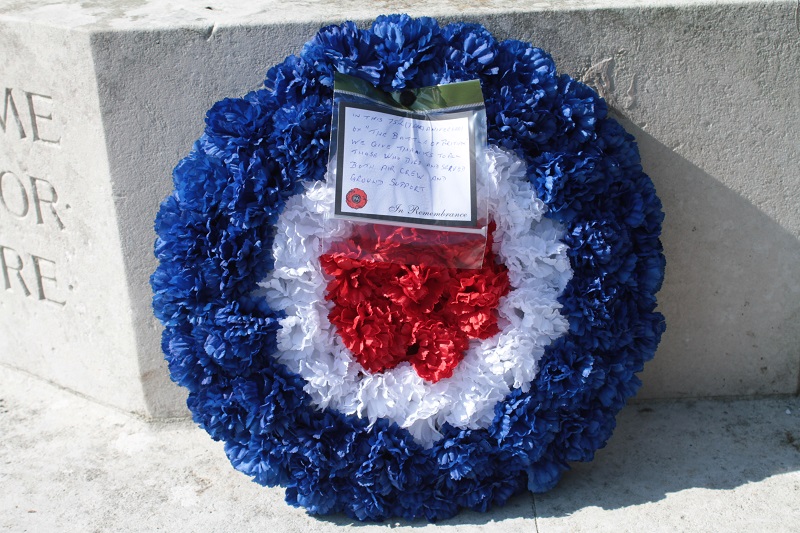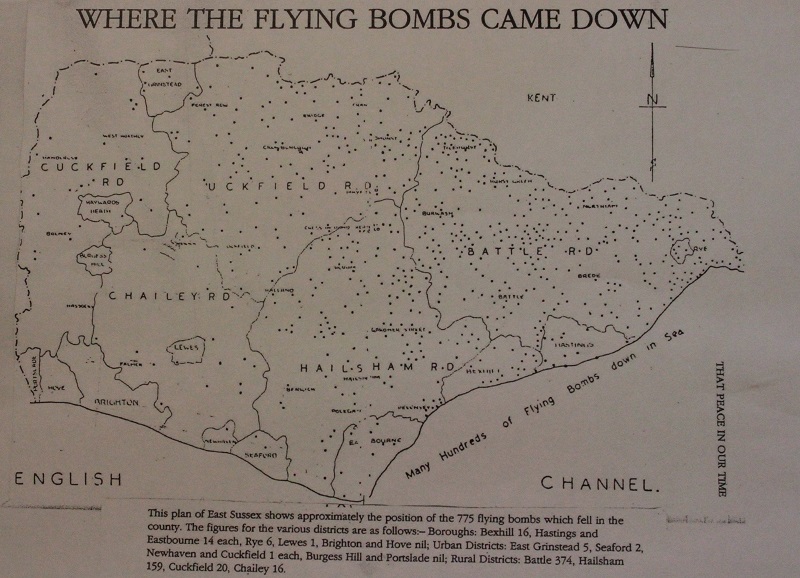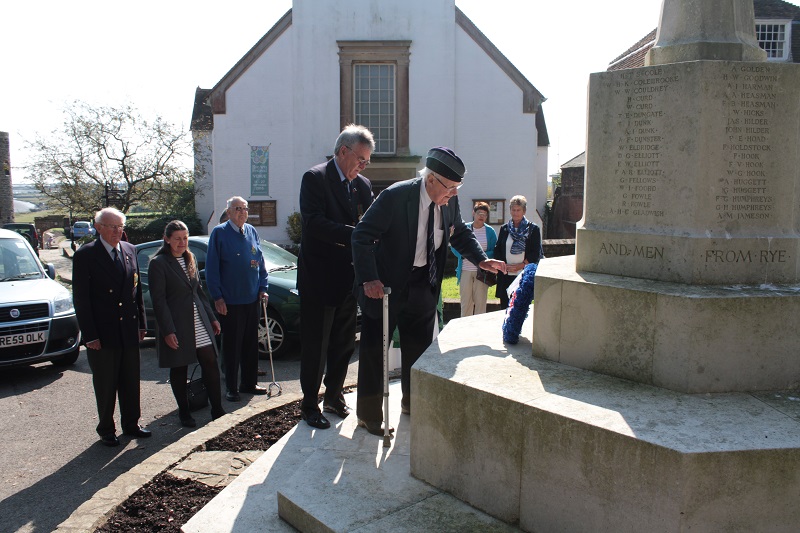Armistice Day (November 11) is celebrated next month to mark the end of the First World War and the Remembrance Service will be held at St Mary’s at 10:55am on Sunday November 8 preceded by a parade and march past the Town Hall.
And the Battle of Britain was commemorated during the Arts Festival by “the Few” last month (see photo above), but how much do we know about “Frontline Rye” – and should we remember it more ?
The Battle of Britain started with German attacks on RAF Rye’s radar station on August 12, peaked on September 15 and petered out over October/November. But the “few” who fought the Germans in the sky above are getting even fewer, and the evacuee who joined one of Rye Arts Festival’s World War Two walks may not probably be able to walk another.
So World War Two is rapidly moving from memory to history, but how far does the town and its surrounds commemorate the fact that it was on the front line and that two major air battles were fought in the skies above – against the Luftwaffe in 1940 and against the doodlebug (an early form of cruise missile) in 1944?
 Church services mainly remember those in uniform, but as the recent wreath (see photo right) reminds us the pilots (“the few”) in the Battle of Britain also depended on ground staff, radar plotters, and other air crew, often female, who flew in replacement aircraft. And the Second World War was also a war on civilians.
Church services mainly remember those in uniform, but as the recent wreath (see photo right) reminds us the pilots (“the few”) in the Battle of Britain also depended on ground staff, radar plotters, and other air crew, often female, who flew in replacement aircraft. And the Second World War was also a war on civilians.
Figures may differ slightly, but in the town around 88 high explosive bombs and 200 incendiary bombs were dropped, 12 civilians died and there were 38 incidents including 17 attacks by machine gun and cannon fire.
Fifteen raids in all hit the town and areas affected included the Ypres Tower, Wish Street, The Mint, 2 Mermaid Street and Lamb House’s summer house (also known as The Garden Room); Bedford Place, King’s Avenue, South Undercliff, the Strand and the cinema in Cinque Ports Street. The railway line and bridge, and shipbuilding by the Strand, were the obvious targets.
A large number of properties were destroyed and many damaged, but it was even noisier when the flying bombs started and hundreds of anti-aircraft guns with some 1,300 gunners lined up round the Bay from Camber to Winchelsea to shoot them down.
On the Festival’s WW2 history walks though there is little evidence to be seen apart from bullet marks in a garden wall, some gaps between buildings and plaques on Lamb House and in the Strand – yet Rye was the front line in a war.
There was a mortuary in the Ypres Tower, which had its roof blown off when bombs landed next door and pilots (British and German) were treated in the Rye Hospital or Care Centre.
Seven doodle bugs landed in the then borough, and 371 in the area around (see map below), causing deaths, injuries and much damage. The first V1 (doodlebug) was spotted on June 18 1944 and the last on August 30.
A lot of this information was shared in one of the Arts Festival’s walks in a booklet “A Timeline of Rye in the Second World War” compiled by Peter Mackenzie Smith and drawing on a lot of work done by former Mayor Jo Kirkham.
November 8 will be a good opportunity to remind ourselves of Rye’s history and the way the town itself, and its citizens – as well as its soldiers, sailors and airmen – were all casualties of war.

Photos: Ray Prewer



